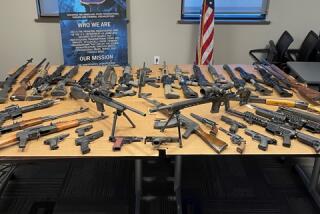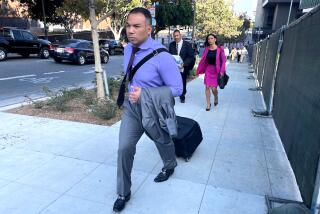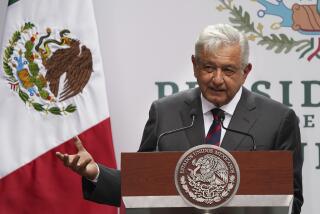Drug lords targeted by Fast and Furious were FBI informants
When the ATF made alleged gun trafficker Manuel Fabian Celis-Acosta its primary target in the ill-fated Fast and Furious investigation, it hoped he would lead the agency to two associates who were Mexican drug cartel members. The ATF even questioned and released him knowing that he was wanted by the Drug Enforcement Administration.
But those two drug lords were secretly serving as informants for the FBI along the Southwest border, newly obtained internal emails show. Had Celis-Acosta simply been held when he was arrested by theBureau of Alcohol, Tobacco, Firearms and Explosives in May 2010, the investigation that led to the loss of hundreds of illegal guns and may have contributed to the death of a Border Patrol agent could have been closed early.
Documents obtained by the Los Angeles Times/Tribune Washington Bureau show that as far back as December 2009 — five months before Celis-Acosta was detained and released at the border in a car carrying 74 live rounds of ammunition — ATF and DEA agents learned by chance that they were separately investigating the same man in the Arizona and Mexico border region.
ATF agents had placed a secret pole camera outside his Phoenix home to track his movements, and separately the DEA was operating a “wire room” to monitor live wiretap intercepts to follow him.
In May 2010, Celis-Acosta was briefly detained at the border in Lukeville, Ariz., and then released by Hope MacAllister, the chief ATF investigator on Fast and Furious, after he promised to cooperate with her.
The ATF had hoped he would lead them to two Mexican cartel members. But records show that after Celis-Acosta finally was arrested in February 2011, the ATF learned to its surprise that the two cartel members were secret FBI informants.
Rep. Darrell Issa (R-Vista), chairman of the House Oversight and Government Reform Committee, and Sen. Charles E. Grassley (R-Iowa) are investigating Fast and Furious, which allowed illegal gun purchases in Arizona in hopes of tracking the weapons to Mexican drug cartel leaders. In a confidential memo to Republican committee members, Issa and Grassley said the ATF should have known the cartel members were informants and immediately shut down Fast and Furious.
“This means the entire goal of Fast and Furious — to target these two individuals and bring them to justice — was a failure,” they wrote. The “lack of follow-through” by the various agencies, they said, typified “the serious management failures that occurred throughout all levels during Fast and Furious.”
James Needles, a top ATF official in Arizona, told congressional investigators last year that it was very frustrating and a “major disappointment” to learn too late about the informants.
ATF officials declined to comment about the investigations because they are continuing.
But Adrian P. Fontes, a Phoenix attorney representing Celis-Acosta, who has pleaded not guilty, said he was concerned the federal agencies purposely did not share information.
“When one hand is not talking to the other, perhaps somebody is hiding something,” he said. “Was this intentional?”
Emails and other records show that once the ATF and DEA realized they were both investigating Celis-Acosta, officials from both agencies met in December 2009 at the DEA field office in Phoenix.
It is unclear, however, whether MacAllister later told the DEA that she released Celis-Acosta in May 2010 and that he was headed into Mexico.
Her boss, David J. Voth, the ATF’s group supervisor for Fast and Furious, told committee investigators that the ATF realized the Sinaloa cartel members were “national security assets,” or FBI informants, only after Celis-Acosta was rearrested. He identified the informants as two brothers, and said, “We first learned when we went back and sorted out the facts.”
More to Read
Start your day right
Sign up for Essential California for news, features and recommendations from the L.A. Times and beyond in your inbox six days a week.
You may occasionally receive promotional content from the Los Angeles Times.







